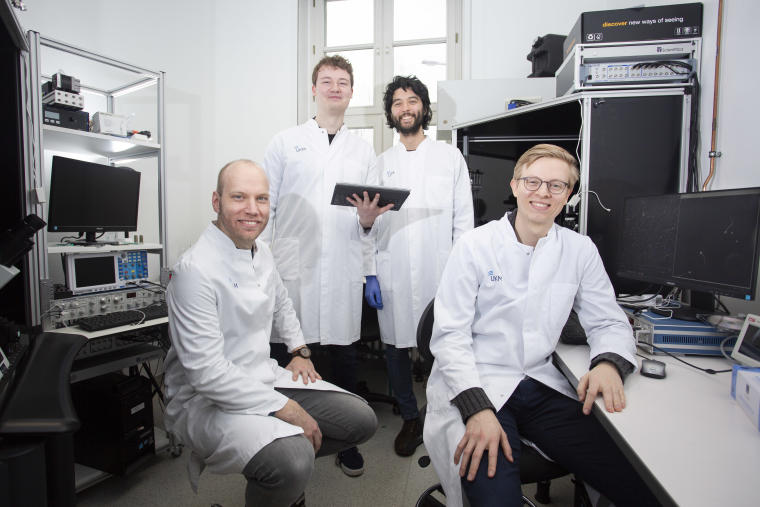20,000 euros for junior scientists in “cell dynamics and imaging”
Acquiring funding for your own research ideas, gaining experience in various working groups or presenting your research findings at international conferences – these are all important steps on the career ladder in science. 15 junior researchers at the University of Münster have now received nearly 20,000 euros in funding for this purpose. They each carry out research on how cells behave in organisms using innovative imaging methods. The funding has been provided by the Cells in Motion Interfaculty Centre of the University, which brings together and supports scientists undertaking research in this field.
An example: creating a fully automated system for analysing sperm motility

In a joint research project, four young scientists from computer science and biology want to develop an imaging system capable of evaluating sperm motility, an important factor for assessing male fertility. “At present, in clinical practice, we analyse semen samples manually because this produces more reliable results than computer-assisted methods,” explains Samuel Young, a doctoral student in biology who is working in the field of reproductive medicine. “Furthermore, in about 15 percent of our infertile patients, none of the existing analytical methods are able to detect any difference when comparing their sperm to those of fertile men. However, we assume that there are very subtle differences in swimming behaviour of the sperm.” The scientists want to build a prototype of a fully automated, time-saving testing system which is more sensitive than existing procedures. “It is very cool to see what solutions can be found when different disciplines work together,” says biologist Dr Matthias Kiel. The team's idea is a kind of mini-microscope that incorporates two specific cameras embedded with innovative software. One of these cameras reacts to the movement of the sperm, thus optimising image definition. The other camera records so-called light polarisation – i.e. the oscillation direction of light waves that are reflected by the sperm. This property of light is invisible to the human eye, which only perceives brightness and colour, and the additional information is expected to help precisely distinguish individual sperm from their surroundings. To be able to process all this information, the team wants to develop software which they will train using artificial intelligence techniques.
All grants at a glance
Pilot projects – interdisciplinary research projects carried out by PhD students and postdocs
- Lars Haalck (Institute of Computer Science), Dr. Matthias Kiel (Institute of Computer Science), Sebastian Thiele (Institute of Computer Science), Samuel Young (Centre of Reproductive Medicine and Andrology) – Imaging invisible cues of sperm motility: A novel standardized and fully automatic imaging and tracking approach for sperm motility analysis
- Linda Groeneweg (Institute of Immunology), Jonas Schütte (Physics Institute), Dr. Martin Wolff (Physics Institute) – Confocal microscope imaging of immune cells using superconducting single-photon detectors
- Dr. Sebastian Maximilian Schloer (Institute of Medical Biochemistry), Karen Olejua Torres (Institute of Pharmaceutical and Medicinal Chemistry) – Formyl peptide receptors as a druggable target to expand the pool of alveolar and bone marrow derived macrophages
“Train Gain Fellowships” for research stays outside Münster
- Dr. Antonella Russo (Institute of Immunology)
“Travel Awards” for participating in scientific conferences
- Dr. Linda Brunotte (Institute of Molecular Virology)
- Franziska Günl (Institute of Molecular Virology)
- Dr. Eva Korpos (Institute of Physiological Chemistry and Pathobiochemistry)
- Simona Mareike Lüttgenau (Medical Clinic D)
- Dr. Dörte Schulte (Institute for Cardiovascular Organogenesis and Regeneration)
Links
- Funding programmes by the Cells in Motion Interfaculty Centre at the University of Münster
- Research in “cell dynamics and imaging” at the University of Münster
Author: Doris Niederhoff

